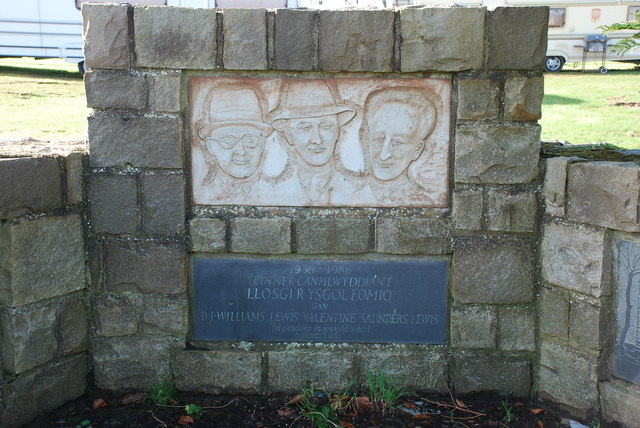Burning a Shed in Wales September 21, 2011
Author: Beach Combing | in : Contemporary , trackback
(Image Alan Fryer)
For Beachcombing, the Welsh are one of those elect nations who, along with the Maoris and the Finns, stand at the right side of the throne of God. Yet Welsh history in the last century has been quiet and uninspiring: in marked contrast, say, to that country’s Gaelic neighbour, Ireland, which sweated uncomfortably in the sun of history. However, there are a handful of worthwhile moments: and among these there is the Llosgi’r Ysgol Fomio or the Burning of the Bombing School an event virtually unknown outside Wales.
This burning might not sound very exciting at first blush and, let Beachcombing be frank with his long-suffering readers, it probably wasn’t much to see at the time. But, 8 September 1936, three men – Saunders Lewis ( a monarchist-nationalist and all round eccentric), Lewis Valentine and David John Williams – motored over to RAF Penrhos at Penyberth, recently chosen by the British government for RAF bombing training, and burnt a shed to protest the use of Wales for what was soon to become the most deadly form of warfare.
Immediately after this act of arson the three men turned themselves in to the authorities – this was Wales, after all: things had to be done properly – and the fun really began. A local court couldn’t settle on a verdict, and the three were sent to the Old Bailey in London where the judge showed a contemptible impatience at their use of Welsh: a language that for the record, was being spoken in the island centuries before English was even dreamt of.
The three were sentenced to nine months in Wormwood Scrubs, a particularly unpleasant English prison, and it is difficult to know whether this was excessive or rather lenient in the circumstances. On the one hand, these were ‘gentle’ Welsh radicals who had gone straight to the police to report their own crime and who had burnt a construction shed, not, as the Welsh name suggests, the entire complex, which had not then been built: Saunders Lewis and his commando would rather have hurled themselves from a cliff rather than risk a human life. On the other, Britain was sidling towards the Apocalypse-Now of the Second World War and civilians putting matches under military buildings was probably not to be encouraged.
In any case, never before can the burning of a shed have had such dramatic consequences: this stands, indeed, as one of the most bizarre but successful acts of terrorism ever committed drbeachcombing AT yahoo DOT com for any others of this calibre.
Modern Welsh nationalism began in the flames at Penrhos and, while today the uber-civilised Plaid Cymru, ‘the Party of Wales’, would never dream of putting matches and gasoline cans on their parliamentary expense form, Plaid Cymru is in 2011 the power in the Welsh-speaking west. This is true, in large part, because ‘the three martyrs of Penrhos’ showed that the quiescence that had gripped the Principality since the Rebecca Riots was a state of mind, not a permanent condition. They were greeted in Caernarfon, on their return from prison, by 15,000 cheering supporters.
A curiosity: there are some WW2 junkies who claim that Penrhos was bombed several times in the war because, though relatively unimportant, the arson attack had convinced German planners that this was a major British base. Those poor Nazi dopes were always predisposed to misunderstand Celtic nationalists: see their endless dalliances with Sinn Fein.


